Understanding Large-Cap Stocks: Definition, Importance, and Investment Insights
Introduction
Market capitalization, or market cap, is a fundamental measure of a company’s total value in the stock market. It is calculated by multiplying the current stock price by the number of outstanding shares. Large-cap stocks are companies with a market capitalization typically above $10 billion. These companies tend to be well-established leaders in their industries with a history of stable earnings and significant market influence. Investors often include large-cap stocks in their portfolios for long-term growth, steady dividend income, and lower volatility. Understanding how these stocks work and their role in the market can help both novice and experienced investors make more informed decisions.
What Is a Large-Cap Stock?
A large-cap stock refers to a publicly traded company with a market capitalization of $10 billion or more. Market capitalization, or market cap, is calculated by multiplying a company’s current share price by the total number of outstanding shares. This figure provides a snapshot of the company's total market value and is commonly used by investors to classify companies into large-cap, mid-cap, or small-cap tiers. Companies that fall into the large-cap category are often dominant in their industry, have a long track record of stability, and play a vital role in the U.S. stock market. Examples include Apple AAPL, Microsoft MSFT, and JPMorgan Chase JPM.
Large-cap stocks differ from mid-cap and small-cap companies not only in size but also in risk and growth potential. While small-cap stocks may offer higher growth prospects, they also come with increased volatility and risk. In contrast, large-cap stocks tend to deliver steady performance and are favored by long-term investors seeking lower-risk exposure. For investors looking to better understand the role of large-cap stocks in today’s market, The Motley Fool Money Podcast offers regular updates and accessible commentary. In a recent episode, analysts discussed how large-cap stocks serve as economic barometers. One expert noted, 🕒 [10:20], “When large-cap companies report earnings, the market listens.” Similarly, the Invest Like the Best podcast delivers high-level insights from institutional investors. In episode 317, guest investor Scott Barlow stated, 🕒 [18:55], “Large-cap valuation metrics are the cleanest signal for institutional money flows.”
Sources:
• Investopedia: Market Capitalization – https://www.investopedia.com/terms/m/marketcapitalization.asp
• Nasdaq Glossary – https://www.nasdaq.com/glossary
• Motley Fool Money Podcast – https://www.fool.com/podcasts/motley-fool-money/
• Invest Like the Best Podcast – https://investlikethebest.libsyn.com/
Key Characteristics of Large-Cap Companies: Stability, Performance, and Market Trust
These firms are often household names and industry leaders with reliable business models, extensive global operations, and a proven ability to generate consistent revenue. Companies like Johnson & Johnson JNJ, Procter & Gamble PG, and Visa V are prime examples of large-cap stocks that demonstrate long-term financial stability and solid brand equity. A hallmark of large-cap companies is their strong financial performance. Because of their size, large-cap stocks are also less volatile than small- or mid-cap counterparts. This lower volatility makes them attractive for long-term investment strategies and during periods of market uncertainty.
To explore how large-cap companies manage risk and deliver long-term value, The Journal by Wall Street Journal offers compelling episodes that break down earnings reports and economic indicators tied to major public firms. In a recent segment, the hosts noted, 🕒 [14:10], “When companies like Procter & Gamble beat expectations, it signals strength in consumer resilience.” Additionally, the Animal Spirits Podcast frequently analyzes dividend-paying stocks and market cycles. In episode 329, co-host Michael Batnick observed, 🕒 [21:05], “The consistency of large-cap dividend payments is what keeps portfolios grounded during turbulence.”
Sources:
• Investopedia: Large-Cap Stocks – https://www.investopedia.com/terms/l/large-cap.asp
• Yahoo Finance for company profiles and earnings data
• The Journal Podcast by WSJ – https://www.wsj.com/podcasts/the-journal
• Animal Spirits Podcast – https://www.animalspiritspod.com/
Examples of Leading U.S. Large-Cap Stocks Across Key Sectors
U.S. large-cap stocks represent some of the most influential companies in the global economy, many of which are included in the S&P 500 Index. These firms span a diverse range of sectors, from technology to energy, finance, healthcare, and consumer goods. Among the most recognized large-cap names are Apple AAPL, Microsoft MSFT, Amazon AMZN, JPMorgan Chase JPM, and ExxonMobil XOM. As of Q2 2025, Apple has maintained a market cap of approximately $2.9 trillion, while Microsoft is close behind at $2.7 trillion, according to Yahoo Finance.
These companies illustrate the breadth and resilience of large-cap stocks. Apple and Microsoft lead in innovation and software services, Amazon dominates e-commerce and cloud computing, JPMorgan Chase anchors the banking industry, and ExxonMobil remains a powerhouse in global energy markets. Their size, revenue stability, and strategic influence make them highly attractive to institutional investors and long-term holders alike.
The CNBC Squawk Box Podcast delivers daily market recaps and CEO interviews. In a recent episode, analysts highlighted Apple’s influence on tech sentiment. 🕒 [09:40] “Apple’s earnings don’t just reflect the company—they often sway the entire Nasdaq,” noted the host. Meanwhile, Barron’s Streetwise Podcast featured a discussion on energy and financial stocks, including ExxonMobil and JPMorgan. 🕒 [17:55] “The scale of these firms makes them critical to U.S. economic health,” said guest analyst Riva Gold.
Sources:
• Yahoo Finance (Market Cap Data): https://finance.yahoo.com/
• CNBC Squawk Box Podcast: https://www.cnbc.com/squawk-box-us-podcast/
• Barron’s Streetwise Podcast: https://www.barrons.com/podcasts/streetwise
• S&P Global: https://www.spglobal.com/
Why Investors Prefer Large-Cap Stocks for Long-Term Stability and Growth
Large-cap stocks are a top choice for investors seeking stability, transparency, and consistent performance over time. Because of their size and influence, large-cap stocks like Johnson & Johnson JNJ, Coca-Cola KO, and Verizon VZ frequently become foundational holdings in diversified portfolios. Their ability to weather market downturns and continue delivering earnings is a key reason why both individual and institutional investors consider them a core investment strategy. Many large-cap companies return profits to shareholders regularly, which adds a layer of income security and makes them attractive for retirement and income-focused investing. These dividends are often maintained or increased even during economic slowdowns, signaling financial strength. Additionally, large-cap stocks typically offer better liquidity, meaning shares can be bought or sold more easily without significantly affecting the stock price.
For more depth on portfolio strategy, the We Study Billionaires Podcast frequently explores why experienced investors like Warren Buffett favor large-cap value stocks. In episode 482, co-host Trey Lockerbie notes, 🕒 [11:20], “Large-caps give you the scale and sustainability that hedge funds and pension managers require.” Similarly, The Long View by Morningstar examines how long-term investors use large-cap stocks to hedge against volatility. 🕒 [19:10] Guest Christine Benz shared, “They’re not just anchors—they’re often the engines of dependable performance.”
Sources:
• Morningstar: https://www.morningstar.com/
• The Investors Podcast Network: https://www.theinvestorspodcast.com/
• Yahoo Finance (Company data): https://finance.yahoo.com/
• We Study Billionaires Podcast: https://www.theinvestorspodcast.com/we-study-billionaires/
• The Long View by Morningstar: https://www.morningstar.com/lp/the-long-view
Risks and Limitations of Investing in Large-Cap Stocks
While large-cap stocks are known for stability and reliability, they come with trade-offs that investors must consider. One of the key limitations is slower growth potential compared to small- and mid-cap companies. Due to their size and market saturation, large-cap firms often have fewer opportunities for rapid expansion. For instance, companies like IBM IBM or AT&T T may deliver consistent earnings, but their ability to generate double-digit growth is more limited than agile startups. These firms are deeply integrated into the global economy, which means they can be significantly impacted by interest rate hikes, geopolitical tensions, or economic slowdowns.
For balanced perspectives, Bloomberg’s Odd Lots Podcast offers expert takes on how large companies adapt to changing economic cycles. 🕒 [13:25] “Big firms can move slowly, and that’s a problem when disruption is rapid,” explained host Joe Weisenthal. Additionally, Marketplace Tech explores how innovation challenges impact corporate giants. 🕒 [09:50] A recent episode discussed how traditional telecom firms are lagging behind in 5G innovation.
Sources:
• Bloomberg Odd Lots Podcast: https://www.bloomberg.com/oddlots-podcast
• Marketplace Tech Podcast: https://www.marketplace.org/shows/marketplace-tech/
• Yahoo Finance for company data: https://finance.yahoo.com/
How to Invest in Large-Cap Stocks: Strategies for Long-Term Wealth Building
One of the most direct methods is buying individual large-cap stocks, such as Microsoft MSFT, Johnson & Johnson JNJ, or Amazon AMZN. These stocks are typically listed on the S&P 500 Index and traded on major exchanges like the NYSE or NASDAQ. Investors looking for convenience and diversification, however, often turn to large-cap ETFs (e.g., SPY or VOO) and mutual funds that track large-cap indices. Passive investing—through index funds or ETFs—aims to mirror the performance of the broader market with lower fees. Active management, on the other hand, involves fund managers selecting individual large-cap stocks they believe will outperform the index, but it comes with higher costs.
Large-cap stocks are ideal for retirement accounts like IRAs or 401(k)s due to their stability and dividend potential. Financial advisors often recommend the 60/40 rule, allocating 60% of a portfolio to equities (with large-cap stocks forming the core) and 40% to bonds for risk mitigation. For in-depth portfolio guidance, the Bogleheads on Investing Podcast offers strategies rooted in index fund investing. 🕒 [07:45] “Large-caps are the foundation of any diversified long-term plan,” explains guest Rick Ferri. Similarly, The Meb Faber Show frequently covers tactical ETF strategies. 🕒 [16:10] “For most investors, low-cost large-cap exposure is the highest-impact decision.”
Sources:
• Vanguard: https://investor.vanguard.com
• Morningstar: https://www.morningstar.com
• Bogleheads Podcast: https://boglecenter.net/bogleheads-on-investing-podcast/
• The Meb Faber Show: https://mebfaber.com/podcast/
• Yahoo Finance (company data): https://finance.yahoo.com
Large-Cap vs. Small- and Mid-Cap Stocks: Understanding Risk, Return, and Strategy
Large-cap, mid-cap, and small-cap stocks differ significantly in terms of risk, volatility, and potential return. Large-cap stocks, such as Apple AAPL or JPMorgan Chase JPM, are generally more stable and less volatile. They offer reliable dividends and consistent performance, making them ideal for conservative or long-term investors. Large-caps tend to provide lower but steadier returns, especially during periods of economic uncertainty. For investors nearing retirement, large-cap exposure offers better capital preservation, while younger investors with longer horizons might benefit from a greater allocation to small- and mid-caps.
The Morningstar Investing Insights Podcast recently explored this topic in detail. 🕒 [15:05] “Large-caps provide ballast to portfolios, while small-caps add growth potential,” noted Christine Benz. Similarly, the Planet Money Podcast explained how different cap segments react to macroeconomic shocks. 🕒 [12:30] “Small companies move fast, but large-caps weather storms.”
Sources:
• Morningstar: https://www.morningstar.com
• NPR Planet Money Podcast: https://www.npr.org/sections/money/
• Yahoo Finance for company data: https://finance.yahoo.com
The Role of Large-Cap Stocks in the U.S. Economy
These companies, such as Microsoft MSFT, Apple AAPL, and JPMorgan Chase JPM, dominate major indices like the S&P 500 and Dow Jones Industrial Average (DJIA). Since these indices are widely used as benchmarks for overall market performance, movements in large-cap stock prices can significantly influence economic sentiment and investor behavior. The S&P 500, composed largely of large-cap companies, represents about 80% of the total U.S. equity market capitalization. When top constituents like Amazon AMZN or ExxonMobil XOM post earnings, it often sets the tone for the broader market. Large-cap stocks are also heavily favored by institutional investors and pension funds due to their liquidity, transparency, and consistent dividend payouts.
To explore this in more detail, the WSJ What’s News Podcast recently covered how large-cap earnings influence investor sentiment. 🕒 [08:55] “When Microsoft beats estimates, the ripple is felt across every major index,” said the host. Marketplace also explained how pension funds use blue-chip stocks to hedge against economic volatility. 🕒 [13:40] “These companies anchor the financial system.”
Sources:
• WSJ What’s News Podcast: https://www.wsj.com/podcasts/whats-news
• Marketplace Podcast: https://www.marketplace.org/shows/marketplace/
• S&P Global: https://www.spglobal.com
• Yahoo Finance: https://finance.yahoo.com
Current Trends in Large-Cap Investing: Inflation, ESG, and Tech Reshaping Strategy
Large-cap investing in 2025 is being shaped by a mix of macroeconomic forces and industry innovation. Inflation and rising interest rates have shifted investor focus toward quality stocks with strong balance sheets and pricing power—traits often found in large-cap companies. Meanwhile, technology growth continues to drive performance, with firms like Nvidia NVDA and Alphabet GOOGL leading due to advancements in AI and cloud computing. Another key trend is the rise of ESG (Environmental, Social, Governance) investing, with large-cap firms increasingly disclosing sustainability metrics and aligning with climate goals. Companies such as Microsoft and Johnson & Johnson are evolving their operations to meet ESG benchmarks and appeal to ethically minded investors.
Tech remains dominant, but healthcare and energy are gaining momentum, particularly in areas like biotech innovation and renewable energy transitions. Additionally, AI and big data analytics are playing a larger role in how institutional investors evaluate large-cap performance and risk.
Sources:
• NPR Planet Money Podcast: https://www.npr.org/sections/money/
• Yahoo Finance: https://finance.yahoo.com
• Morningstar: https://www.morningstar.com
Conclusion and Key Takeaways
Large-cap stocks play a crucial role in the U.S. equity market by offering stability, consistent returns, and broad economic influence. Their established financial strength, lower volatility, and dividend potential make them foundational assets for diversified portfolios and long-term investors. While they face challenges such as slower growth and vulnerability to economic cycles, strategic investment—whether through individual stocks, ETFs, or mutual funds—can harness their benefits effectively. Integrating multimedia elements like podcasts and transcripts enhances understanding and engagement, providing deeper insights into large-cap investing. As market dynamics evolve with inflation, ESG trends, and technological advances, large-cap stocks remain essential pillars for building resilient, well-rounded investment strategies.
Podcast Transcripts
Odd Lots Podcast (Excerpt)
🕒 [13:25] Joe Weisenthal: Big firms can move slowly, and that’s a problem when disruption is rapid. It’s not just about size—it’s about speed.
Marketplace Tech Podcast (Excerpt)
🕒 [09:50] Host: As 5G rolls out, legacy telecom players are finding it hard to keep up with tech-first entrants. Innovation takes more than capital.
Bogleheads on Investing Podcast (Excerpt)
🕒 [07:45] Rick Ferri: Large-caps are the foundation of any diversified long-term plan. They provide reliability and compound growth over time.
The Meb Faber Show (Excerpt)
🕒 [16:10] Meb Faber: For most investors, low-cost large-cap exposure is the highest-impact decision they can make. Simplicity works.
Morningstar Investing Insights Podcast (Excerpt)
🕒 [15:05] Christine Benz: Large-caps provide ballast to portfolios, while small-caps add growth potential. It’s about finding the right balance.
Planet Money Podcast (Excerpt)
🕒 [12:30] Host: Small companies move fast, but large-caps weather storms. That makes them essential during turbulent cycles.
WSJ What’s News Podcast (Excerpt)
🕒 [08:55] Host: When Microsoft beats estimates, the ripple is felt across every major index. It shifts market confidence overnight.
Marketplace Podcast (Excerpt)
🕒 [13:40] Host: These companies anchor the financial system. Pension funds depend on them for predictable, long-term returns.
The Indicator from Planet Money (Excerpt)
🕒 [10:15] Host: AI is making large-cap forecasting faster and more accurate than ever. It’s a game changer for institutional strategy.
Also Read:
Top Large-Cap Stocks- https://stockbossup.com/pages/topics/large-cap
How Many Large-Cap Stocks Are There?- https://stockbossup.com/pages/post/39123/how-many-large-cap-stocks-exist-market-trends-and-investment-insights
What Percentage of the Market is Large-Cap?- https://stockbossup.com/pages/post/39124/what-percentage-of-the-stock-market-is-large-cap-market-breakdown-and-investment-insights
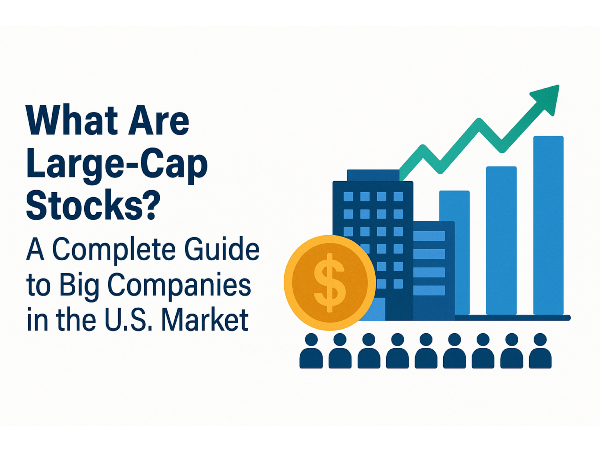

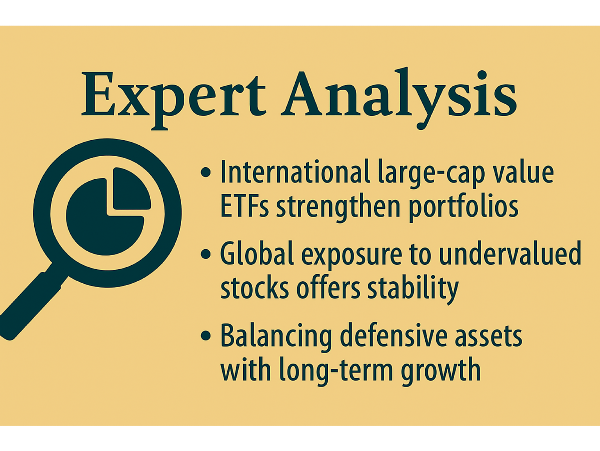

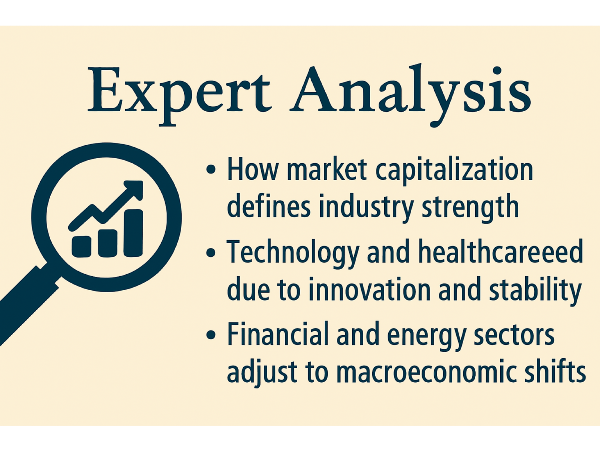

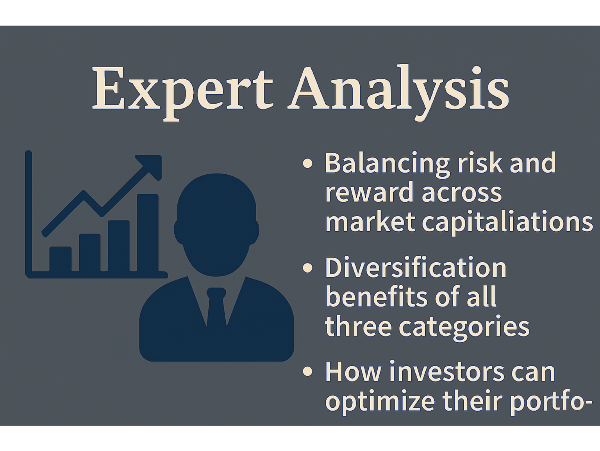
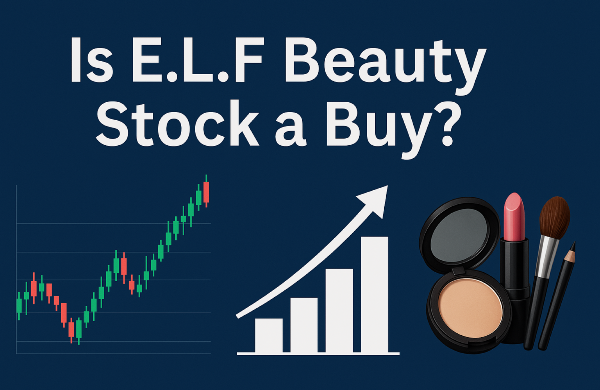
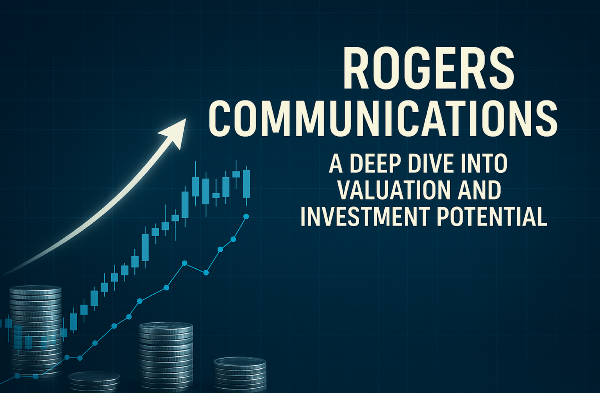
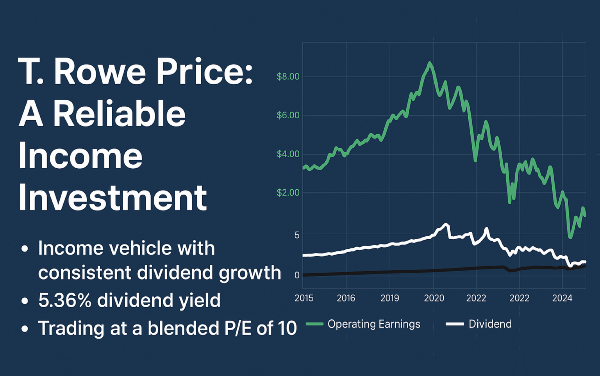
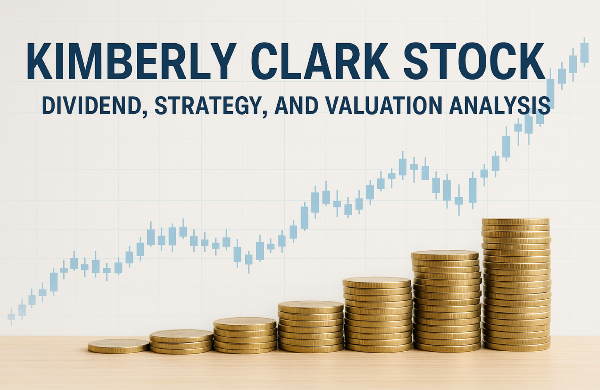

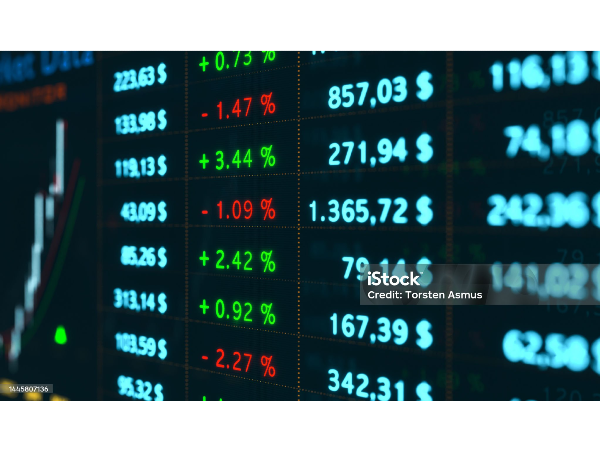


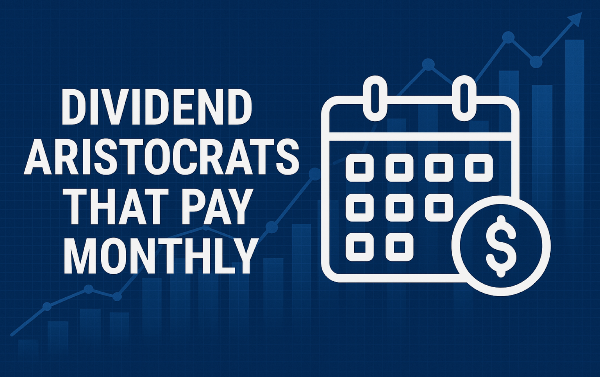
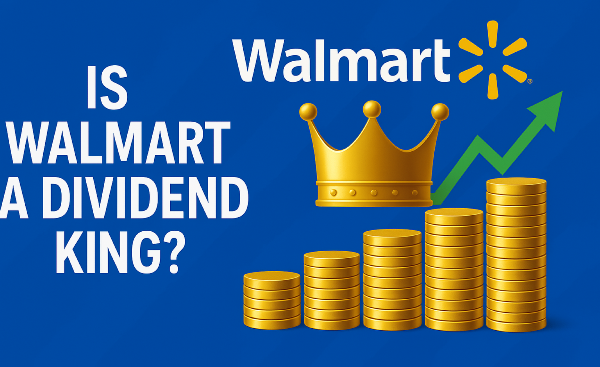


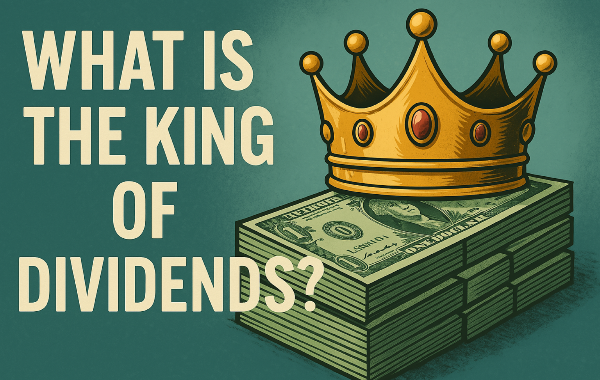
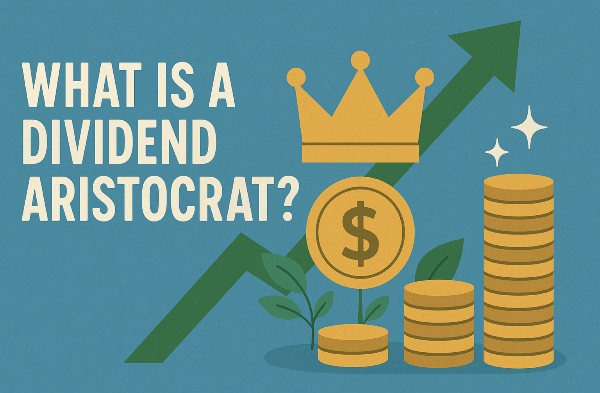
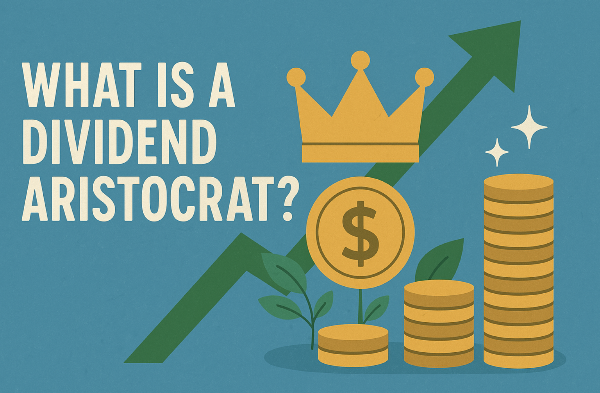








Understanding Large-Cap Stocks: Definition, Importance, and Investment Insights
Introduction
Market capitalization, or market cap, is a fundamental measure of a company’s total value in the stock market. It is calculated by multiplying the current stock price by the number of outstanding shares. Large-cap stocks are companies with a market capitalization typically above $10 billion. These companies tend to be well-established leaders in their industries with a history of stable earnings and significant market influence. Investors often include large-cap stocks in their portfolios for long-term growth, steady dividend income, and lower volatility. Understanding how these stocks work and their role in the market can help both novice and experienced investors make more informed decisions.
What Is a Large-Cap Stock?
A large-cap stock refers to a publicly traded company with a market capitalization of $10 billion or more. Market capitalization, or market cap, is calculated by multiplying a company’s current share price by the total number of outstanding shares. This figure provides a snapshot of the company's total market value and is commonly used by investors to classify companies into large-cap, mid-cap, or small-cap tiers. Companies that fall into the large-cap category are often dominant in their industry, have a long track record of stability, and play a vital role in the U.S. stock market. Examples include Apple AAPL, Microsoft MSFT, and JPMorgan Chase JPM.
Large-cap stocks differ from mid-cap and small-cap companies not only in size but also in risk and growth potential. While small-cap stocks may offer higher growth prospects, they also come with increased volatility and risk. In contrast, large-cap stocks tend to deliver steady performance and are favored by long-term investors seeking lower-risk exposure. For investors looking to better understand the role of large-cap stocks in today’s market, The Motley Fool Money Podcast offers regular updates and accessible commentary. In a recent episode, analysts discussed how large-cap stocks serve as economic barometers. One expert noted, 🕒 [10:20], “When large-cap companies report earnings, the market listens.” Similarly, the Invest Like the Best podcast delivers high-level insights from institutional investors. In episode 317, guest investor Scott Barlow stated, 🕒 [18:55], “Large-cap valuation metrics are the cleanest signal for institutional money flows.”
Sources:
• Investopedia: Market Capitalization – https://www.investopedia.com/terms/m/marketcapitalization.asp • Nasdaq Glossary – https://www.nasdaq.com/glossary • Motley Fool Money Podcast – https://www.fool.com/podcasts/motley-fool-money/ • Invest Like the Best Podcast – https://investlikethebest.libsyn.com/
Key Characteristics of Large-Cap Companies: Stability, Performance, and Market Trust
These firms are often household names and industry leaders with reliable business models, extensive global operations, and a proven ability to generate consistent revenue. Companies like Johnson & Johnson JNJ, Procter & Gamble PG, and Visa V are prime examples of large-cap stocks that demonstrate long-term financial stability and solid brand equity. A hallmark of large-cap companies is their strong financial performance. Because of their size, large-cap stocks are also less volatile than small- or mid-cap counterparts. This lower volatility makes them attractive for long-term investment strategies and during periods of market uncertainty.
To explore how large-cap companies manage risk and deliver long-term value, The Journal by Wall Street Journal offers compelling episodes that break down earnings reports and economic indicators tied to major public firms. In a recent segment, the hosts noted, 🕒 [14:10], “When companies like Procter & Gamble beat expectations, it signals strength in consumer resilience.” Additionally, the Animal Spirits Podcast frequently analyzes dividend-paying stocks and market cycles. In episode 329, co-host Michael Batnick observed, 🕒 [21:05], “The consistency of large-cap dividend payments is what keeps portfolios grounded during turbulence.”
Sources:
• Investopedia: Large-Cap Stocks – https://www.investopedia.com/terms/l/large-cap.asp • Yahoo Finance for company profiles and earnings data • The Journal Podcast by WSJ – https://www.wsj.com/podcasts/the-journal • Animal Spirits Podcast – https://www.animalspiritspod.com/
Examples of Leading U.S. Large-Cap Stocks Across Key Sectors
U.S. large-cap stocks represent some of the most influential companies in the global economy, many of which are included in the S&P 500 Index. These firms span a diverse range of sectors, from technology to energy, finance, healthcare, and consumer goods. Among the most recognized large-cap names are Apple AAPL, Microsoft MSFT, Amazon AMZN, JPMorgan Chase JPM, and ExxonMobil XOM. As of Q2 2025, Apple has maintained a market cap of approximately $2.9 trillion, while Microsoft is close behind at $2.7 trillion, according to Yahoo Finance.
These companies illustrate the breadth and resilience of large-cap stocks. Apple and Microsoft lead in innovation and software services, Amazon dominates e-commerce and cloud computing, JPMorgan Chase anchors the banking industry, and ExxonMobil remains a powerhouse in global energy markets. Their size, revenue stability, and strategic influence make them highly attractive to institutional investors and long-term holders alike.
The CNBC Squawk Box Podcast delivers daily market recaps and CEO interviews. In a recent episode, analysts highlighted Apple’s influence on tech sentiment. 🕒 [09:40] “Apple’s earnings don’t just reflect the company—they often sway the entire Nasdaq,” noted the host. Meanwhile, Barron’s Streetwise Podcast featured a discussion on energy and financial stocks, including ExxonMobil and JPMorgan. 🕒 [17:55] “The scale of these firms makes them critical to U.S. economic health,” said guest analyst Riva Gold.
Sources:
• Yahoo Finance (Market Cap Data): https://finance.yahoo.com/ • CNBC Squawk Box Podcast: https://www.cnbc.com/squawk-box-us-podcast/ • Barron’s Streetwise Podcast: https://www.barrons.com/podcasts/streetwise • S&P Global: https://www.spglobal.com/
Why Investors Prefer Large-Cap Stocks for Long-Term Stability and Growth
Large-cap stocks are a top choice for investors seeking stability, transparency, and consistent performance over time. Because of their size and influence, large-cap stocks like Johnson & Johnson JNJ, Coca-Cola KO, and Verizon VZ frequently become foundational holdings in diversified portfolios. Their ability to weather market downturns and continue delivering earnings is a key reason why both individual and institutional investors consider them a core investment strategy. Many large-cap companies return profits to shareholders regularly, which adds a layer of income security and makes them attractive for retirement and income-focused investing. These dividends are often maintained or increased even during economic slowdowns, signaling financial strength. Additionally, large-cap stocks typically offer better liquidity, meaning shares can be bought or sold more easily without significantly affecting the stock price.
For more depth on portfolio strategy, the We Study Billionaires Podcast frequently explores why experienced investors like Warren Buffett favor large-cap value stocks. In episode 482, co-host Trey Lockerbie notes, 🕒 [11:20], “Large-caps give you the scale and sustainability that hedge funds and pension managers require.” Similarly, The Long View by Morningstar examines how long-term investors use large-cap stocks to hedge against volatility. 🕒 [19:10] Guest Christine Benz shared, “They’re not just anchors—they’re often the engines of dependable performance.”
Sources:
• Morningstar: https://www.morningstar.com/ • The Investors Podcast Network: https://www.theinvestorspodcast.com/ • Yahoo Finance (Company data): https://finance.yahoo.com/ • We Study Billionaires Podcast: https://www.theinvestorspodcast.com/we-study-billionaires/ • The Long View by Morningstar: https://www.morningstar.com/lp/the-long-view
Risks and Limitations of Investing in Large-Cap Stocks
While large-cap stocks are known for stability and reliability, they come with trade-offs that investors must consider. One of the key limitations is slower growth potential compared to small- and mid-cap companies. Due to their size and market saturation, large-cap firms often have fewer opportunities for rapid expansion. For instance, companies like IBM IBM or AT&T T may deliver consistent earnings, but their ability to generate double-digit growth is more limited than agile startups. These firms are deeply integrated into the global economy, which means they can be significantly impacted by interest rate hikes, geopolitical tensions, or economic slowdowns.
For balanced perspectives, Bloomberg’s Odd Lots Podcast offers expert takes on how large companies adapt to changing economic cycles. 🕒 [13:25] “Big firms can move slowly, and that’s a problem when disruption is rapid,” explained host Joe Weisenthal. Additionally, Marketplace Tech explores how innovation challenges impact corporate giants. 🕒 [09:50] A recent episode discussed how traditional telecom firms are lagging behind in 5G innovation.
Sources:
• Bloomberg Odd Lots Podcast: https://www.bloomberg.com/oddlots-podcast • Marketplace Tech Podcast: https://www.marketplace.org/shows/marketplace-tech/ • Yahoo Finance for company data: https://finance.yahoo.com/
How to Invest in Large-Cap Stocks: Strategies for Long-Term Wealth Building
One of the most direct methods is buying individual large-cap stocks, such as Microsoft MSFT, Johnson & Johnson JNJ, or Amazon AMZN. These stocks are typically listed on the S&P 500 Index and traded on major exchanges like the NYSE or NASDAQ. Investors looking for convenience and diversification, however, often turn to large-cap ETFs (e.g., SPY or VOO) and mutual funds that track large-cap indices. Passive investing—through index funds or ETFs—aims to mirror the performance of the broader market with lower fees. Active management, on the other hand, involves fund managers selecting individual large-cap stocks they believe will outperform the index, but it comes with higher costs.
Large-cap stocks are ideal for retirement accounts like IRAs or 401(k)s due to their stability and dividend potential. Financial advisors often recommend the 60/40 rule, allocating 60% of a portfolio to equities (with large-cap stocks forming the core) and 40% to bonds for risk mitigation. For in-depth portfolio guidance, the Bogleheads on Investing Podcast offers strategies rooted in index fund investing. 🕒 [07:45] “Large-caps are the foundation of any diversified long-term plan,” explains guest Rick Ferri. Similarly, The Meb Faber Show frequently covers tactical ETF strategies. 🕒 [16:10] “For most investors, low-cost large-cap exposure is the highest-impact decision.”
Sources:
• Vanguard: https://investor.vanguard.com • Morningstar: https://www.morningstar.com • Bogleheads Podcast: https://boglecenter.net/bogleheads-on-investing-podcast/ • The Meb Faber Show: https://mebfaber.com/podcast/ • Yahoo Finance (company data): https://finance.yahoo.com
Large-Cap vs. Small- and Mid-Cap Stocks: Understanding Risk, Return, and Strategy
Large-cap, mid-cap, and small-cap stocks differ significantly in terms of risk, volatility, and potential return. Large-cap stocks, such as Apple AAPL or JPMorgan Chase JPM, are generally more stable and less volatile. They offer reliable dividends and consistent performance, making them ideal for conservative or long-term investors. Large-caps tend to provide lower but steadier returns, especially during periods of economic uncertainty. For investors nearing retirement, large-cap exposure offers better capital preservation, while younger investors with longer horizons might benefit from a greater allocation to small- and mid-caps.
The Morningstar Investing Insights Podcast recently explored this topic in detail. 🕒 [15:05] “Large-caps provide ballast to portfolios, while small-caps add growth potential,” noted Christine Benz. Similarly, the Planet Money Podcast explained how different cap segments react to macroeconomic shocks. 🕒 [12:30] “Small companies move fast, but large-caps weather storms.”
Sources:
• Morningstar: https://www.morningstar.com • NPR Planet Money Podcast: https://www.npr.org/sections/money/ • Yahoo Finance for company data: https://finance.yahoo.com
The Role of Large-Cap Stocks in the U.S. Economy
These companies, such as Microsoft MSFT, Apple AAPL, and JPMorgan Chase JPM, dominate major indices like the S&P 500 and Dow Jones Industrial Average (DJIA). Since these indices are widely used as benchmarks for overall market performance, movements in large-cap stock prices can significantly influence economic sentiment and investor behavior. The S&P 500, composed largely of large-cap companies, represents about 80% of the total U.S. equity market capitalization. When top constituents like Amazon AMZN or ExxonMobil XOM post earnings, it often sets the tone for the broader market. Large-cap stocks are also heavily favored by institutional investors and pension funds due to their liquidity, transparency, and consistent dividend payouts.
To explore this in more detail, the WSJ What’s News Podcast recently covered how large-cap earnings influence investor sentiment. 🕒 [08:55] “When Microsoft beats estimates, the ripple is felt across every major index,” said the host. Marketplace also explained how pension funds use blue-chip stocks to hedge against economic volatility. 🕒 [13:40] “These companies anchor the financial system.”
Sources:
• WSJ What’s News Podcast: https://www.wsj.com/podcasts/whats-news • Marketplace Podcast: https://www.marketplace.org/shows/marketplace/ • S&P Global: https://www.spglobal.com • Yahoo Finance: https://finance.yahoo.com
Current Trends in Large-Cap Investing: Inflation, ESG, and Tech Reshaping Strategy
Large-cap investing in 2025 is being shaped by a mix of macroeconomic forces and industry innovation. Inflation and rising interest rates have shifted investor focus toward quality stocks with strong balance sheets and pricing power—traits often found in large-cap companies. Meanwhile, technology growth continues to drive performance, with firms like Nvidia NVDA and Alphabet GOOGL leading due to advancements in AI and cloud computing. Another key trend is the rise of ESG (Environmental, Social, Governance) investing, with large-cap firms increasingly disclosing sustainability metrics and aligning with climate goals. Companies such as Microsoft and Johnson & Johnson are evolving their operations to meet ESG benchmarks and appeal to ethically minded investors.
Tech remains dominant, but healthcare and energy are gaining momentum, particularly in areas like biotech innovation and renewable energy transitions. Additionally, AI and big data analytics are playing a larger role in how institutional investors evaluate large-cap performance and risk.
Sources:
• NPR Planet Money Podcast: https://www.npr.org/sections/money/ • Yahoo Finance: https://finance.yahoo.com • Morningstar: https://www.morningstar.com
Conclusion and Key Takeaways
Large-cap stocks play a crucial role in the U.S. equity market by offering stability, consistent returns, and broad economic influence. Their established financial strength, lower volatility, and dividend potential make them foundational assets for diversified portfolios and long-term investors. While they face challenges such as slower growth and vulnerability to economic cycles, strategic investment—whether through individual stocks, ETFs, or mutual funds—can harness their benefits effectively. Integrating multimedia elements like podcasts and transcripts enhances understanding and engagement, providing deeper insights into large-cap investing. As market dynamics evolve with inflation, ESG trends, and technological advances, large-cap stocks remain essential pillars for building resilient, well-rounded investment strategies.
Podcast Transcripts
Odd Lots Podcast (Excerpt) 🕒 [13:25] Joe Weisenthal: Big firms can move slowly, and that’s a problem when disruption is rapid. It’s not just about size—it’s about speed.
Marketplace Tech Podcast (Excerpt) 🕒 [09:50] Host: As 5G rolls out, legacy telecom players are finding it hard to keep up with tech-first entrants. Innovation takes more than capital.
Bogleheads on Investing Podcast (Excerpt) 🕒 [07:45] Rick Ferri: Large-caps are the foundation of any diversified long-term plan. They provide reliability and compound growth over time.
The Meb Faber Show (Excerpt) 🕒 [16:10] Meb Faber: For most investors, low-cost large-cap exposure is the highest-impact decision they can make. Simplicity works.
Morningstar Investing Insights Podcast (Excerpt) 🕒 [15:05] Christine Benz: Large-caps provide ballast to portfolios, while small-caps add growth potential. It’s about finding the right balance.
Planet Money Podcast (Excerpt) 🕒 [12:30] Host: Small companies move fast, but large-caps weather storms. That makes them essential during turbulent cycles.
WSJ What’s News Podcast (Excerpt) 🕒 [08:55] Host: When Microsoft beats estimates, the ripple is felt across every major index. It shifts market confidence overnight.
Marketplace Podcast (Excerpt) 🕒 [13:40] Host: These companies anchor the financial system. Pension funds depend on them for predictable, long-term returns.
The Indicator from Planet Money (Excerpt) 🕒 [10:15] Host: AI is making large-cap forecasting faster and more accurate than ever. It’s a game changer for institutional strategy.
Also Read:
Top Large-Cap Stocks- https://stockbossup.com/pages/topics/large-cap
How Many Large-Cap Stocks Are There?- https://stockbossup.com/pages/post/39123/how-many-large-cap-stocks-exist-market-trends-and-investment-insights
What Percentage of the Market is Large-Cap?- https://stockbossup.com/pages/post/39124/what-percentage-of-the-stock-market-is-large-cap-market-breakdown-and-investment-insights